A review of the North American genus Epimartyria (Lepidoptera, Micropterigidae) with a discussion of the larval plastron
- PMID: 22573948
- PMCID: PMC3332027
- DOI: 10.3897/zookeys.183.2556
A review of the North American genus Epimartyria (Lepidoptera, Micropterigidae) with a discussion of the larval plastron
Abstract
The indigenous North American micropterigid genus Epimartyria Walsingham,1898 is revised. Three species are recognized, including Epimartyria auricrinella Walsingham, 1898 which occurs widely over much of the northeastern United States and Canada, a new species, Epimartyria bimaculella Davis & Landry from northwestern United States and Canada, and Epimartyria pardella (Walsingham, 1880) from northern California to northern Oregon. The larva of Epimartyria auricrinella is described in detail, supplemented with illustrations of the external structure of the larval integument. The larval plastron is described and illustrated for Epimartyria, and this is compared with the plastrons of Neomicropteryx Issiki, 1931 and Micropterix Hübner, 1825. COI barcode sequences show that the three species are genetically distinct, congruent with morphological differences. Marked haplotype divergence within some Epimartyria auricrinella populations appears to be unrelated to morphology, geography or phenology.
Keywords: DNA barcodes; Distribution; genital morphology; larval morphology; plastron.
Figures
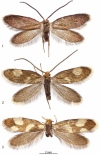
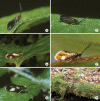
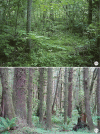
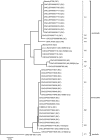


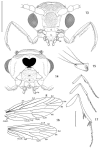
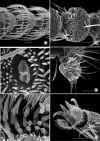



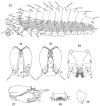

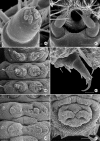
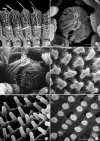

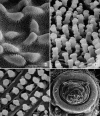
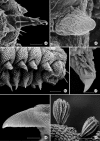

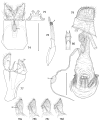
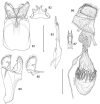
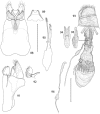
References
-
- Carter DJ, Dugdale JS. (1982) Notes on collecting and rearing Micropterix (Lepidoptera: Micropterigidae) larvae in England. Entomologist’s Gazette 33: 43-47.
-
- Davis DR. (1975) A review of the West Indian moths of the family Psychidae with descriptions of new taxa and immature stages. Smithsonian Contributions to Zoology 188: 1-66. doi: 10.5479/si.00810282.188 - DOI
-
- Davis DR. (1983) Micropterigidae. In: RW Hodges et al. (Eds) Check List of the Lepidoptera of America North of Mexico. EW Classey Ltd and the Wedge Entomological Research Foundation, London, 5–7.
-
- Davis DR. (1986) A New Family of Monotrysian Moths from Austral South America (Lepidoptera: Palaephatidae), with a Phylogenetic Review of the Monotrysia. Smithsonian Contributions to Zoology 434: 1–202. [599 Figs, 15 maps, 2 tables]
-
- Davis DR. (1987) Micropterigidae, Eriocraniidae. In: FW Stehr. (Ed). Immature insects. Volume 1, Kendall/Hunt Publishing, Dubuque, Iowa: 341-343.
LinkOut - more resources
Full Text Sources
